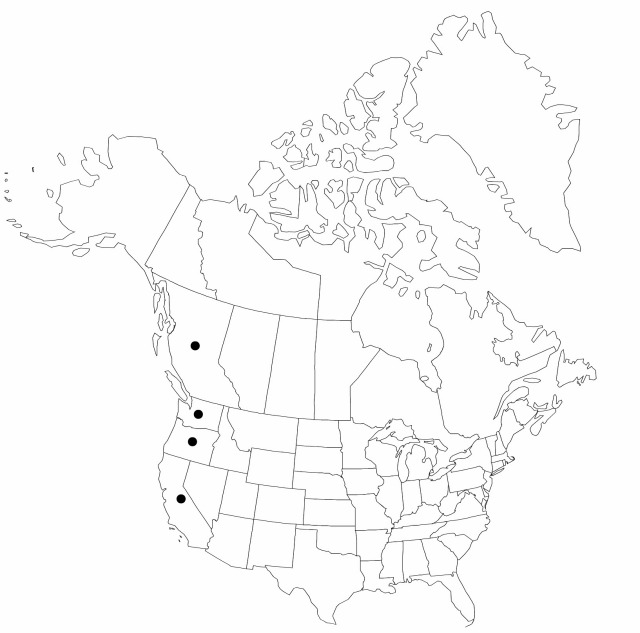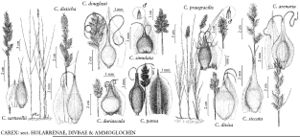Carex pansa
Bot. Gaz. 13: 82. 1888.
Rhizomes coarse, 1.8–2.6 mm thick, typically with long, unbranched segments from which shoots arise singly every few nodes. Culms sharply trigonous, 8–40 cm, scabrous-angled distally. Leaves: basal sheaths dark-brown; sheaths with hyaline inner band, apex not prolonged, glabrous; ligules 0–1.2 mm; blades 1.7–3.8 mm wide. Inflorescences 1.2–2.5 cm; spikes 3–12, usually unisexual; staminate spikes lanceoloid; pistillate spikes compact, ovoid. Pistillate scales dark reddish-brown to nearly purple-black, with broad hyaline margins, ovate, apex acute to acuminate-awned, shiny. Anthers 1.7–3.1 mm, apiculus bristly hairy (30X). Perigynia dark-brown to nearly black at maturity, essentially veinless adaxially, usually ± stipitate, ovate, planoconvex, 3.1–4.2 × 1.3–1.8 mm, dull; beak 0.7–1.5 mm, apex ± hyaline, obscurely bidentate.
Phenology: Fruiting May–Jul.
Habitat: Dunes and sandy, open habitats
Elevation: 0–30 m
Distribution

B.C., Calif., Oreg., Wash.
Discussion
Carex pansa is striking not only for its sand-dune habitat, but its very dark scales, basal sheaths, and rhizomes scales.
Although C. pansa is sometimes united with the east Asian C. arenicola as subsp. pansa, the North American species seems clearly closer to C. praegracilis. Carex arenicola, though occupying a similar habitat, differs in its usually more elongate, ellipsoid inflorescences, mostly bisexual spikes, pale and dull brown pistillate scales with an inconspicuous hyaline margins, usually larger perigynia (ca. 3.7–5.2 mm) that somewhat exceed the scales, anthers with very short apiculus (<0.1 mm), and paler brown, bladeless basal sheaths and rhizomes scales.
Selected References
None.
Lower Taxa
"shortened" is not a number.
